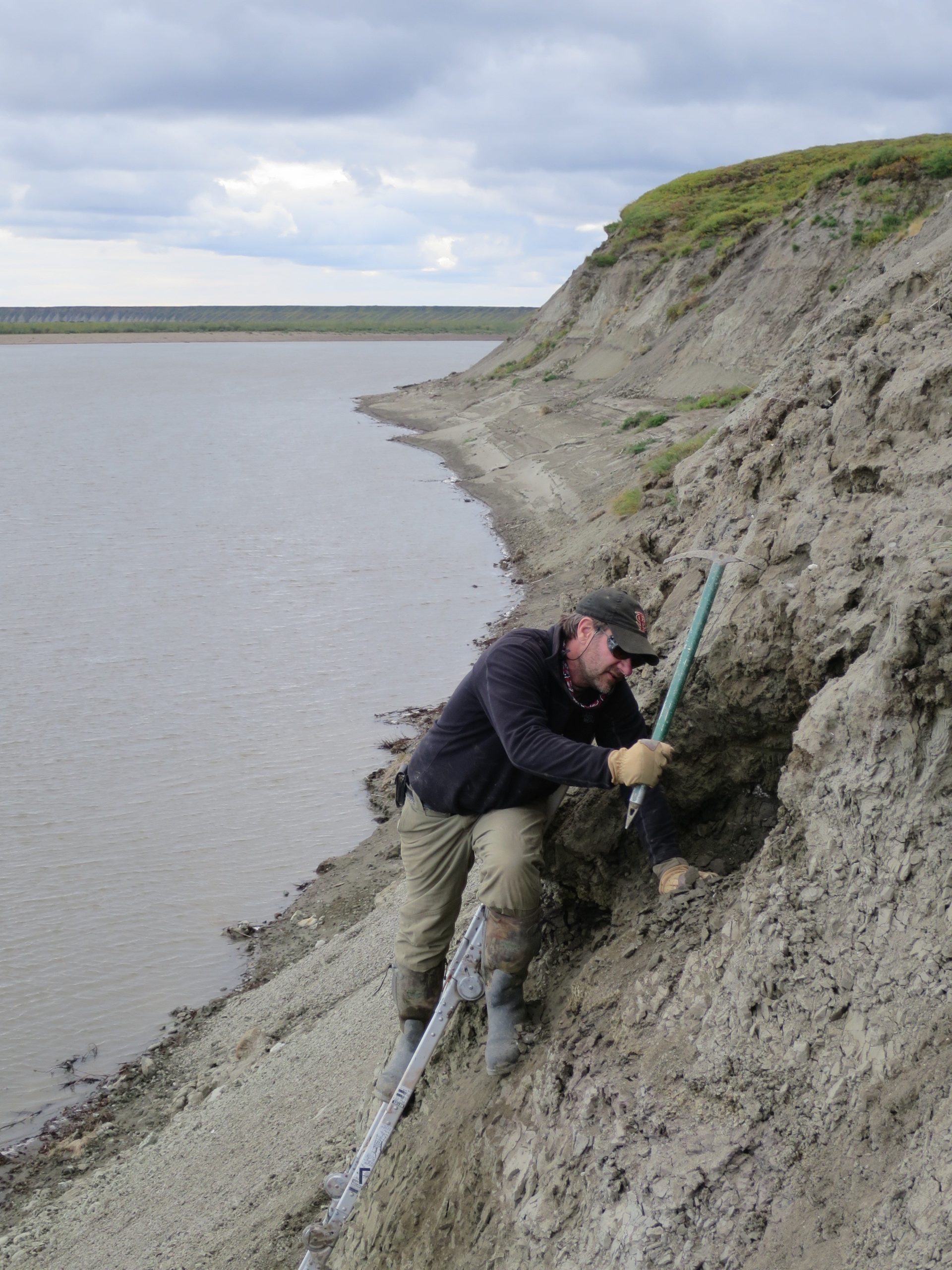On a riverbank in the far north of Alaska, a team of paleontologists have been scraping away at the muck. They’ve uncovered evidence of dinosaur breeding at the top of what is now North America, a sign that in the late Cretaceous period, dinosaurs were living full-time in cool climates.
The discovery has implications for understanding the bloodedness, morphology, and behaviour of dinosaurs. The finds were made in the Prince Creek formation, in a part of Alaska so far north it’s a four-day journey from Fairbanks that requires a car, a plane, and a number of boats. For 70 years, researchers have been travelling to the far-off regions of federal land to understand how dinosaurs persevered.
Things were warmer 70 million years ago, but dinosaurs that far north would still have had to deal with temperatures just a little above freezing in the colder months, which would be dark and dismal. If the animals weren’t migrating south, there would be evidence of them having a permanent presence through the Arctic winters of the Cretaceous.
“Dinosaurs nested in the Arctic — not just barely in the Arctic, but way up in the Arctic, practically in the North Pole,” said Patrick Druckenmiller, a paleontologist at the University of Alaska Museum and lead author of the paper, in a video call. “That strongly suggests they weren’t migratory but were overwintering. And if they overwintered, it opens up a whole series of questions about how they did that.”

Reptiles are cold-blooded, or ectotherms, which most importantly means that the external temperature determines the animal’s internal temperature. That’s why lizards live in sunny stretches of the planet, whether dry or humid, but don’t set up shop in places that freeze over. But endotherms — animals that have body heat and regulate their own temperature — can endure such frigid environments, as long as they have a steady food source, water, and shelter from the harsh conditions.
Migration is a lot easier if you’re a big dinosaur without children. But these research team found dinosaurs of all ages and sizes, from duck-billed hadrosaurs to meat-eating tyrannosaurs; they even found small mammals and other vertebrates. Tom Rich, a vertebrate paleontologist at Museums Victoria in Australia who was not affiliated with the recent paper, had previously reported the first evidence of a non-avian dinosaur in a polar environment. Rich said that migration south for the winter didn’t seem possible for animals that couldn’t fly, due to the energy it required.
Druckenmiller’s team took sheathes of dirt from the banks of the Colville River and brought them into their lab, where it was deposited on fine-toothed screens to sieve it for microfossils. The team filtered the dirt for any grains of material larger than half a centimeter in diameter. “Now we’ve got clean dirt,” Druckenmiller said. “Then we take a little teaspoon of this dried sand and put it on a tray, and look at every single grain under a microscope.”

The team was looking for very small stuff, and ultimately they found it, in the shape of many perinatal dinosaur bones and teeth, evidence of the baby animals up north. All the same mottled fossil colour and fragmented, the bones weren’t helpful in identifying any particular species. But the researchers could attribute the teeth to their ancient owners based on their shape. They’ve yet to find dinosaur eggs, but surely baby dinosaurs are even better proof of dinosaurs setting up shop that far north.
Intriguingly, besides the dinosaurs, the only animals so far found by excavations at Prince Creek include warm-blooded Cretaceous birds and mammals. In other words, creatures we know to be warm-blooded. Cold blooded animals like amphibians and crocodilians have yet to be found at those latitudes. “I think that this is some of the most compelling evidence that dinosaurs were in fact warm-blooded,” said co-author Gregory Erickson, a paleontologist at Florida State University, in a statement.
As for how the dinosaurs actually made it through the winter? They could have been feathered, which would insulate them from the cold — imagine a tyrannosaur in snow. “Ectotherms don’t have external coverings like that, but it makes great sense that an animal living up in the Arctic would want to have a down parka,” Druckenmiller said. Further, he said, the dinosaurs could have hibernated through the cold winter months, though the team has yet to find any evidence of dinosaur burrows. But perhaps that will come, as the team continues to shave layers off the 70-million-year-old creek bed, sifting for answers.
